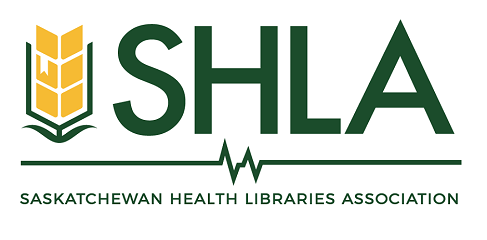Meeting date: October 25, 2017
Presenter: Lukas Miller
Citation: Shamseer, L., Moher, D., Maduekwe, O., Turner, L., Barbour, V., Burch, R., … Shea, B. J. (2017). Potential predatory and legitimate biomedical journals: can you tell the difference? A cross-sectional comparison. BMC Medicine, 15(1). https://doi.org/10.1186/s12916-017-0785-9
Article abstract:
BACKGROUND – The Internet has transformed scholarly publishing, most notably, by the introduction of open access publishing. Recently, there has been a rise of online journals characterized as ‘predatory’, which actively solicit manuscripts and charge publications fees without providing robust peer review and editorial services. We carried out a cross-sectional comparison of characteristics of potential predatory, legitimate open access, and legitimate subscription-based biomedical journals.
METHODS – On July 10, 2014, scholarly journals from each of the following groups were identified – potential predatory journals (source: Beall’s List), presumed legitimate, fully open access journals (source: PubMed Central), and presumed legitimate subscription-based (including hybrid) journals (source: Abridged Index Medicus). MEDLINE journal inclusion criteria were used to screen and identify biomedical journals from within the potential predatory journals group. One hundred journals from each group were randomly selected. Journal characteristics (e.g., website integrity, look and feel, editors and staff, editorial/peer review process, instructions to authors, publication model, copyright and licensing, journal location, and contact) were collected by one assessor and verified by a second. Summary statistics were calculated.
RESULTS – Ninety-three predatory journals, 99 open access, and 100 subscription-based journals were analyzed; exclusions were due to website unavailability. Many more predatory journals’ homepages contained spelling errors (61/93, 66%) and distorted or potentially unauthorized images (59/93, 63%) compared to open access journals (6/99, 6% and 5/99, 5%, respectively) and subscription-based journals (3/100, 3% and 1/100, 1%, respectively). Thirty-one (33%) predatory journals promoted a bogus impact metric – the Index Copernicus Value – versus three (3%) open access journals and no subscription-based journals. Nearly three quarters (n = 66, 73%) of predatory journals had editors or editorial board members whose affiliation with the journal was unverified versus two (2%) open access journals and one (1%) subscription-based journal in which this was the case. Predatory journals charge a considerably smaller publication fee (median $100 USD, IQR $63–$150) than open access journals ($1865 USD, IQR $800–$2205) and subscription-based hybrid journals ($3000 USD, IQR $2500–$3000).
CONCLUSIONS – We identified 13 evidence-based characteristics by which predatory journals may potentially be distinguished from presumed legitimate journals. These may be useful for authors who are assessing journals for possible submission or for others, such as universities evaluating candidates’ publications as part of the hiring process.
Reason for selection: This paper was selected in consideration of our engaging discussion on predatory publishing and open access at the September 26, 2017 Journal Club meeting. Given the prominence of this issue in academic and research library settings, it is prudent we as librarians understand not only how to discern predatory journals from those that are legitimate, but also doing so ethically and mindfully with the guidance of evidence-based science.
This article is also open peer reviewed – a relatively new approach to scholarly publishing. A discussion question has been tailored to this as a learning opportunity for librarians.
Critical Appraisal: Please use the CEBMA Critical Appraisal of a Cross-Sectional Study (Survey)worksheet as a template to assess this study.
Questions:
- Consider the 13 evidence-based characteristics (Table 10) in comparison to other method(s) you take to assess the quality of journals. Do you agree with the characteristics the authors have identified? Can you foresee any potential problems in adopting this approach?
- Consider and share any experiences you have had browsing websites or handling solicitation emails from predatory publishers. How did you make the determination, and how difficult was it to decide? Would having this tool available at the time made a difference for you or a client?
- This article is open peer review. Please take the opportunity to click the “Open Peer Review Reports” link below the article title and browse the reviewer reports and author comments. Be prepared to share your thoughts and opinions on this relatively new approach to academic publishing. A brief explanation of BMC’s open peer review policy can be found here. Consider what implications open peer review can have for scholarly communication, predatory publishing, and our work in hospital/clinical libraries. What implications will this have for us/our clients in the future?
- Open discussion.
Discussion summary & recommendations:
We determined the article addressed a clear concern or issue. The study design was deemed suitable to tackle the issue, and we perceived minimal issues concerning the sample(s), bias, and findings. We acknowledges inherit ethical concerns relating to Beall’s List, given other research on this topic.
Statistical significance and confidence intervals were not presented by the authors. However, given the study design and sample, this was acceptable.
We felt that additional information concerning the authors’ scope & definition of “predatory publishers” and/or “predatory publishing” would have helped to clarify matters of identification.
We determined that the 13 evidence-based criteria for predatory publishers presented by the authors would be a helpful aid for librarians assisting scholars, though some carry more weight than others. We acknowledged that there is no “one true” solution to this problem, and that individual discretion is often required.
We further discussed the 13 criteria and our own personal/professional approaches to aiding scholars with finding where to publish their research.
